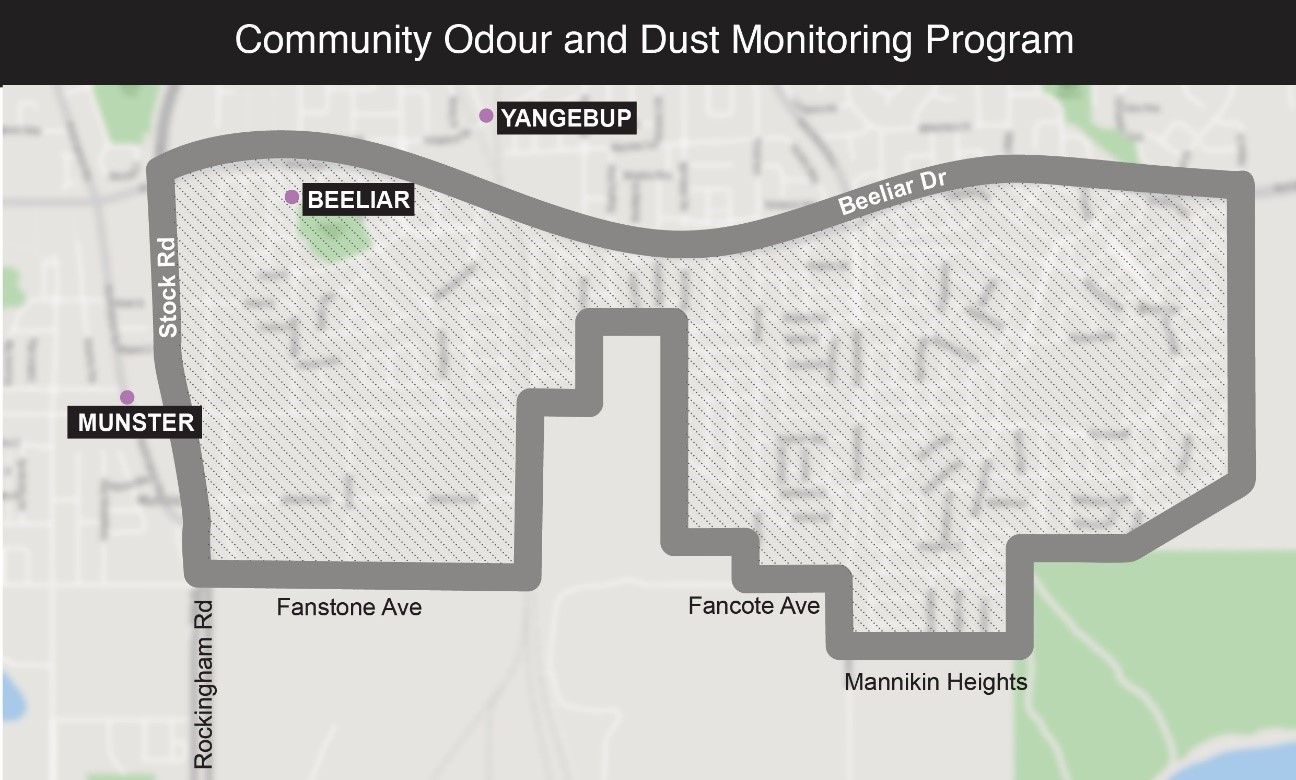To investigate, we ran the Cockburn Area Air Monitoring Plan from February to mid-May 2019.
The aim of this plan was to help us identify where dust and odours were coming from, contributing weather conditions, who was being impacted and to what extent.
The results from the dust and odour programs will be published as soon as possible later this year. The four programs below were carried out under this plan.
View the plan's media statement and frequently asked questions.
Community Odour and Dust Monitoring Program
Show moreWe established a group of community volunteers from the area to report odour or dust impacts when they experienced or witnessed. See the map below of the area.
We wish to thank the 69 volunteers who logged their last reports in mid-May for the program. We received more than 330 reports.
To finalise the program, we held three information sessions for volunteers on 4, 5 and 6 June 2019 – where we presented the data that was provided during the program.
We are now analysing and interpreting this data.
The program will help us build a picture of the current state of odour and dust in the area – assisting us to identify impacts, possible sources and the role local weather conditions are playing.
View the FAQs on the Community Odour and Dust Monitoring Program.
Odour Patrol Program
Show moreOur officers patrolled the area to identify any odour impacts and their sources. We performed 28 patrols spanning 50 hours.
Odour patrol officers were, on numerous occasions, able to correlate their findings with reports from the Community Odour and Dust Monitoring Program’s volunteers.
Data from odour patrols will be analysed in conjunction with data from the Community Odour and Dust Monitoring Program and other additional information, to provide robust interpretations about the status of odour sources and identified odour impacts in this area.
View the FAQs for our Odour Patrol Program.
Light Detection and Ranging (LiDAR) and Dust Monitoring Program
Show moreWe installed a LiDAR unit and several particle monitors designed to assess the origin and pathway of airborne dust.
As per our previous LiDAR programs at Cape Lambert, Port Hedland and Mandogalup, the LiDAR and particle monitor recordings were live-streamed on our website during the program.
View the fact sheet on the Dust Monitoring Program and FAQs on the LiDAR Program.
Dust Sampling Program
Show moreThe dust sampling program involved placing eight dust deposition plates at specific locations in the area including several background sites to collect dust for analysis.
The main aim was to assist in the determination of sources of dust in the area.
These plates were sampled daily during the program and selected samples were analysed.
This data will assist in determining dust sources in the area and validating the dust monitoring data to provide information on the types of dust being deposited.
View the FAQs for our Dust Sampling Program.



